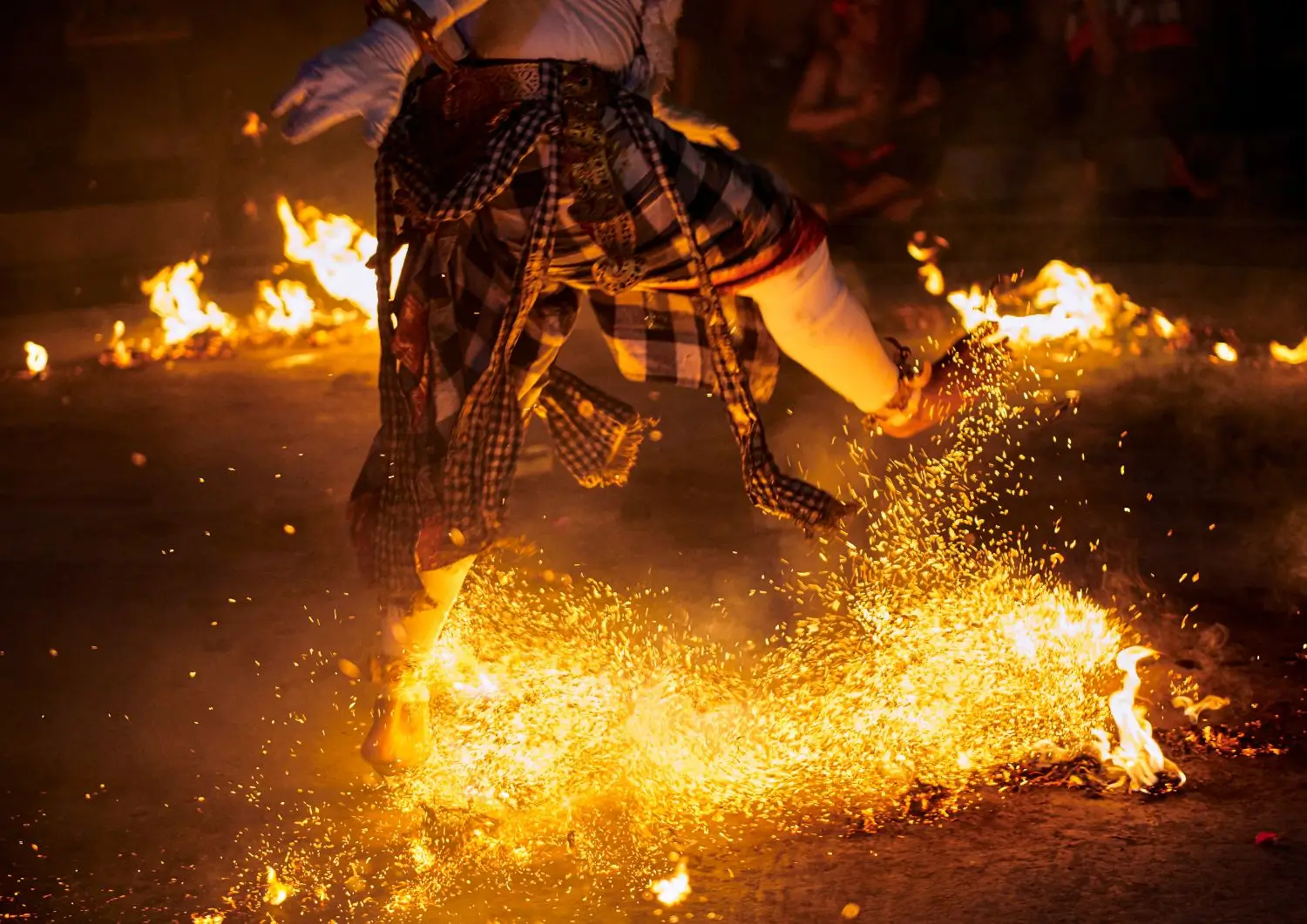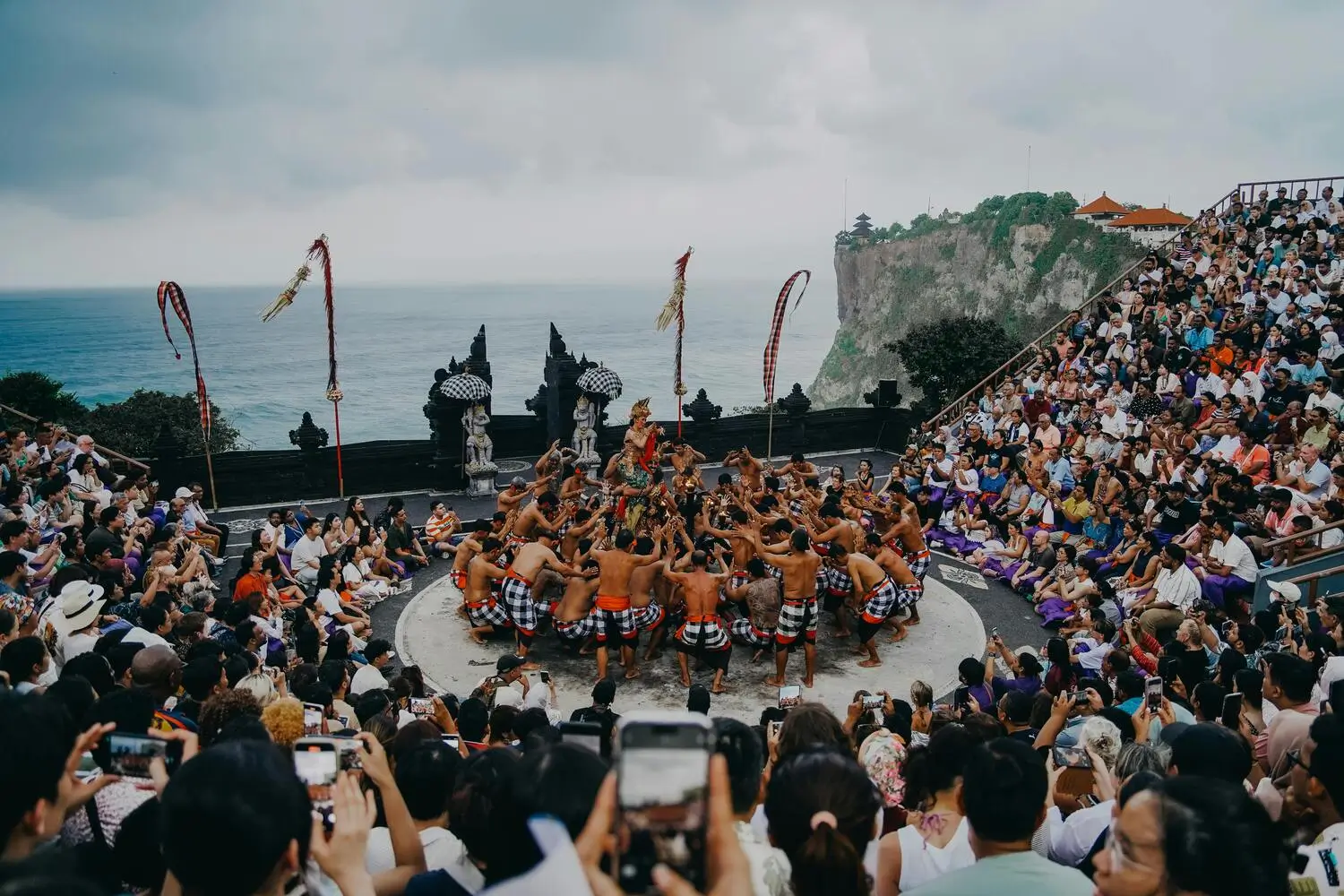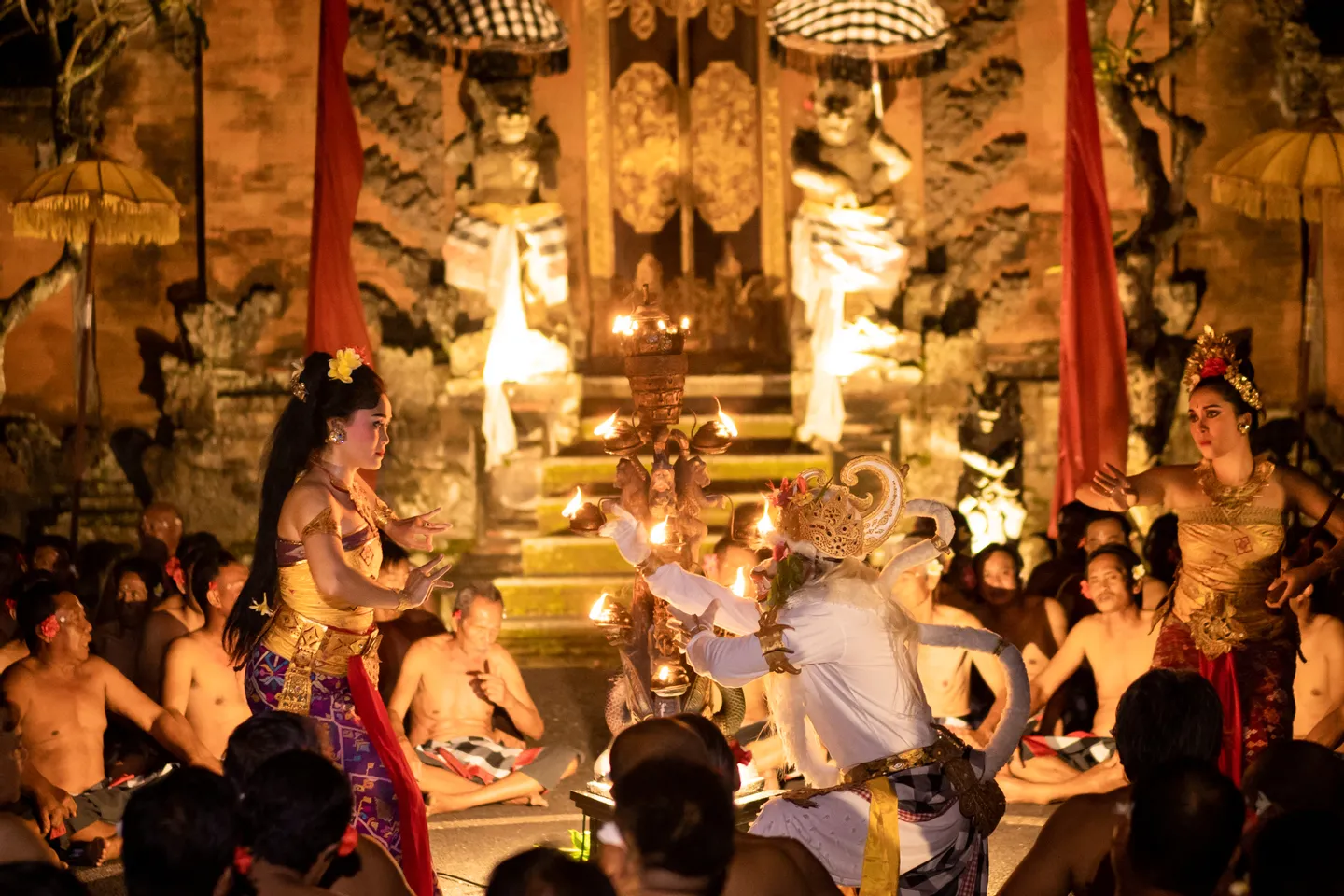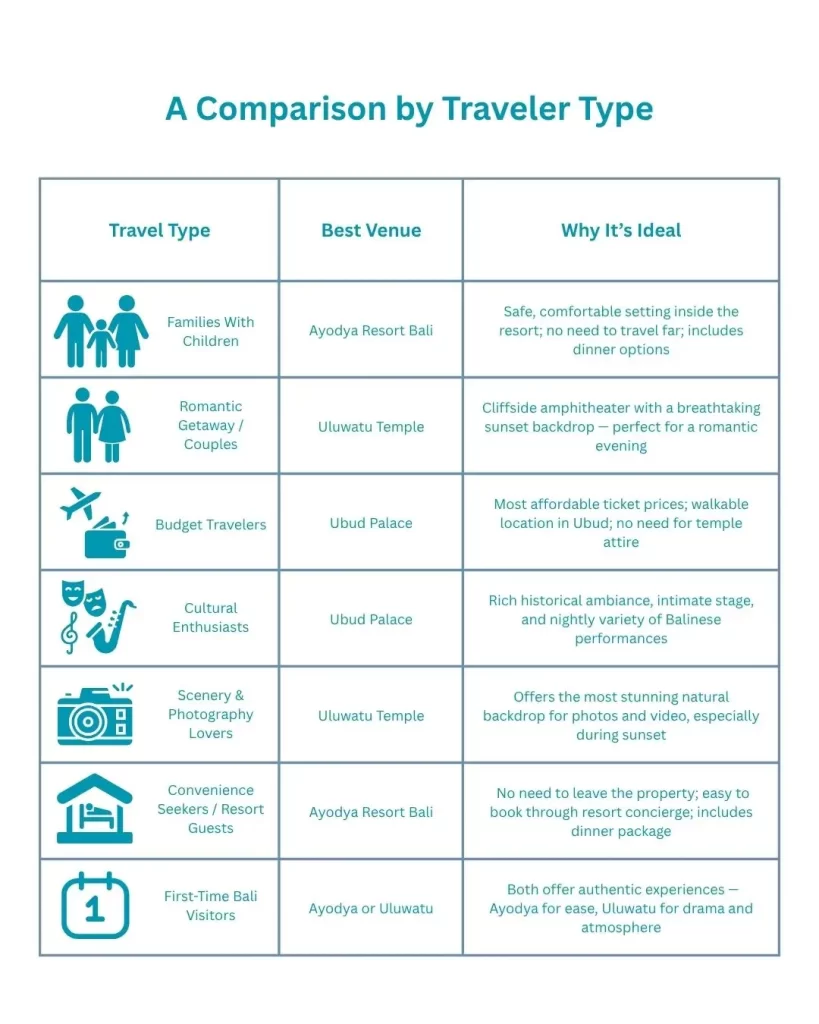Discover the Magic of Kecak Dance in Bali: The Ultimate Guide for Families and Culture Lovers
Discover the Magic of Kecak Dance in Bali: The Ultimate Guide for Families and Culture Lovers
July 31, 2025
Bali isn’t just a tropical getaway — it’s a place where culture, tradition, and storytelling come alive, especially through dance. One of the most iconic performances you’ll encounter during your visit is the mesmerizing Kecak dance. With its rhythmic chants, captivating fire sequences, and deeply rooted mythological story, this performance offers an unforgettable cultural experience for international travelers and families alike.
Whether you’re staying in Ubud, Uluwatu, or the tranquil beaches of Nusa Dua, watching a Kecak dance is a must-do on your Bali itinerary. And if you’re staying at Ayodya Resort Bali, you’re in luck — this cultural treasure is just steps from your room.

What is the Kecak Dance?
Often referred to as the “monkey chant” dance, the Kecak dance is one of Bali’s most unique and powerful cultural performances. Unlike traditional Balinese dances accompanied by gamelan instruments, Kecak is performed entirely a cappella by a group of over 50 men, sitting in a circle and rhythmically chanting “cak, cak, cak” in unison. This hypnotic vocal rhythm forms the backdrop for a dramatic retelling of scenes from the Hindu epic, Ramayana.
At the center of the performance are characters like Rama, Sita, Hanuman, and Ravana, portrayed through expressive dance, vibrant costumes, and dynamic choreography. Combined with dramatic fire effects, it’s a spectacle that enthralls adults and children alike.
The Origins and History of Kecak Dance
The roots of the Kecak dance trace back to the 1930s, making it a relatively modern creation by Balinese standards. However, its foundations are much older, drawing from a traditional trance ritual known as Sanghyang, where male villagers would enter a meditative state to communicate with spirits.
The modern form of the Kecak dance was developed by Wayan Limbak, a Balinese dancer, in collaboration with Walter Spies, a German painter and musician living in Bali. Their aim was to create a cultural performance that could appeal to international audiences while preserving Balinese spiritual traditions. By merging the rhythmic trance chant of Sanghyang with scenes from the Ramayana epic, they created a dance that became an iconic representation of Balinese art.
Why Kecak Dance is a Must-See for Families
Cultural experiences on vacation don’t have to be boring — and the Kecak dance proves just that. Here’s why it’s perfect for families:
- • No Language Barrier: The story is told visually through movement, making it easy for all ages to follow.
- • Visually Captivating: Colorful costumes, expressive facial movements, and the glow of the fire create a theatrical atmosphere that kids love.
- • Engaging Sound: The chant of dozens of performers is rhythmic and immersive — no instruments needed.
- • Short and Sweet: Most performances last about an hour, making them ideal for young children with shorter attention spans.
For parents hoping to introduce their children to local culture in a way that’s interactive, exciting, and unforgettable, Kecak is an easy win.
What to Expect at a Kecak Dance Performance
If it’s your first time attending a Kecak dance, here’s what you can expect:
- • Setting: Often held in outdoor amphitheaters or temple courtyards at dusk. The setting sun and fire torches add to the ambiance.
- • Duration: Around 60 to 70 minutes.
- • Chanting Circle: Performers sit in concentric circles, swaying and chanting in rhythm.
- • Storytelling: Key scenes from the Ramayana are acted out in the center by dancers in elaborate costumes.
- • Fire Dance Finale: A dramatic highlight where a performer dances barefoot through fire — a crowd favorite.
Don’t worry if you’re not familiar with the Ramayana. Most venues provide a printed synopsis of the scenes, and the movements are expressive enough to convey the story visually.
Best Places to Watch a Kecak Dance in Bali
There are several popular spots across the island where you can witness the powerful Kecak dance. Whether you’re seeking dramatic cliffside views or a convenient, family-friendly experience near your resort, Bali has you covered.
1. Uluwatu Temple

Overview:
Arguably the most iconic venue for the Kecak dance, Uluwatu Temple offers a cliff-top amphitheater with a panoramic sunset view over the Indian Ocean. The setting adds an ethereal quality to the performance, especially during the fire dance finale.
Price:
- • Entrance to Uluwatu Temple: IDR 30,000 (adults), IDR 15,000 (children)
- • Kecak Dance Ticket: IDR 150,000–200,000 per person (limited seating)
How to Get There:
From Nusa Dua or Kuta, Uluwatu Temple is about a 45-minute drive. Taxis, Grab (ride-hailing app), or private drivers are the most convenient options. Plan to arrive by 4:30 PM to explore the temple grounds before the show begins around 6:00 PM.
Tips:
- • Dress modestly (sarong rental available at entrance)
- • Watch out for monkeys near the temple
2. Ubud Palace

Source: Tiket.com
Overview:
Located in the heart of Ubud, the Ubud Palace offers nightly cultural shows, including the Kecak dance on selected evenings. This venue is a favorite among travelers who want to experience Bali’s artistic traditions in a more intimate setting.
Price:
- • Kecak Dance Ticket: IDR 100,000–150,000 per person
- • No separate entrance fee for the palace
How to Get There:
From Denpasar or Nusa Dua, expect a 1.5–2 hour drive to Ubud. Many travelers hire a private car for the day or join a cultural tour. Ubud is very walkable, so if you’re staying nearby, you can reach the palace on foot.
Tips:
- • Arrive early to get good seats (first come, first served)
- • Combine with dinner at one of Ubud’s nearby restaurants
3. Ayodya Resort Bali – Balinese Theater

Experience the Kecak Dance while dining on a delicious delectable buffet dinner selection.
Overview:
If you’re staying in Nusa Dua, Ayodya Resort Bali offers the perfect opportunity to enjoy the Kecak dance without leaving your resort grounds. The performance takes place at the resort’s beautifully designed Balinese Theater, featuring traditional architecture, ambient lighting, and comfortable seating — ideal for families.
Price:
- • Available as part of a cultural evening or dinner package
- • Starting from IDR 500,000 per person (includes dinner and show access)
- • Special rates may apply for resort guests and children
How to Get There:
No transport needed if you’re a guest! The theater is located within Ayodya Resort Bali. For non-guests, the resort is approximately 25 minutes from Ngurah Rai International Airport and easily accessible by taxi or ride-share.
Tips:
- • Reserve your seats in advance through the resort concierge
- • Pair the experience with a beachfront dinner for a full cultural night
Where Should You Watch the Kecak Dance? A Comparison by Traveler Type
With multiple venues offering Kecak performances in Bali, choosing the best one depends on your travel style, budget, and comfort preferences. Here’s a quick comparison to help you decide:

Experience Kecak Dance at Ayodya Resort Bali
Ayodya Resort Bali doesn’t just offer beachfront luxury — it brings the essence of Bali right to you. With its Balinese-style architecture, tranquil gardens, and cultural programming, the resort is a destination in itself. Among its highlights is the open-air Balinese Theater, where traditional performances like the Kecak dance are regularly staged.
Why It’s Perfect for Families:
- • Convenience: No need to leave the resort or plan extra transportation.
- • Comfort: Enjoy the show in a safe, relaxed, and exclusive environment.
- • Atmosphere: Authentic ambiance with detailed Balinese design and evening lighting.
- • Dining Options: Pair your cultural evening with dinner at one of Ayodya’s family-friendly restaurants for a complete experience.
Whether you’re traveling with toddlers, teens, or grandparents, watching a Kecak dance at Ayodya Resort Bali is a meaningful way to immerse in Balinese culture — without compromising comfort.
Tips for Enjoying the Kecak Dance with Your Family
Here are some practical tips to ensure the best experience:
- • Arrive Early: Secure front-row seats and settle in before the crowd.
- • Explain the Story Briefly: A quick rundown of the Ramayana will help kids follow along.
- • Dress Comfortably: Balinese temples often require modest clothing — bring a sarong or use those provided.
- • Pack Light Snacks or Water: Especially useful for young children.
- • Respect the Performance: Avoid flash photography and talking during the show.
Beyond the Performance: Explore Balinese Culture at Ayodya Resort Bali
Your cultural experience doesn’t end with the Kecak dance. Ayodya Resort Bali is designed to reflect traditional Balinese heritage throughout its grounds and guest experiences. Here are a few more ways to explore:
- • Balinese Cooking Classes: Learn how to prepare authentic dishes together as a family.
- • Cultural Workshops: Activities such as offering-making and batik painting are often available.
- • Traditional Spa Treatments: Try a Balinese massage infused with local healing rituals.
- • Festive Cultural Nights: Seasonal events often include traditional food, music, and dances.
By blending luxurious relaxation with authentic cultural experiences, Ayodya makes it easy for international families to connect with the soul of Bali.
Conclusion
Watching a Kecak dance in Bali isn’t just a tourist activity — it’s a doorway into the island’s rich spiritual and artistic traditions. For families and cultural travelers, it’s a rare chance to witness history, legend, and performance come together under the stars.
And if you’re staying at Ayodya Resort Bali, this unforgettable experience is right within your reach — combining convenience, authenticity, and comfort. From the chanting rhythms to the flickering firelight, the Kecak dance will be a memory your family carries long after your footprints fade from Nusa Dua’s white sand.
Ready to explore Balinese culture up close? Let Ayodya Resort Bali be your gateway to tradition, storytelling, and the island’s timeless beauty.
